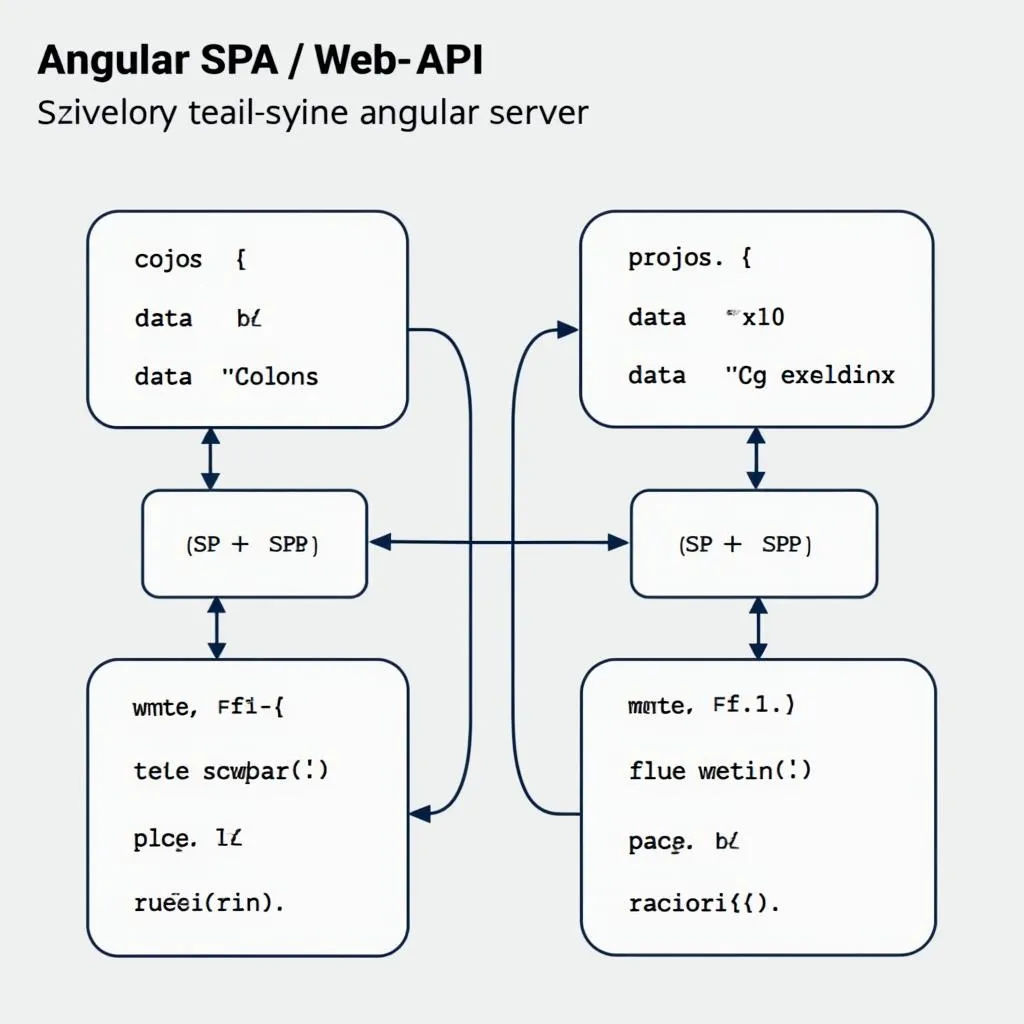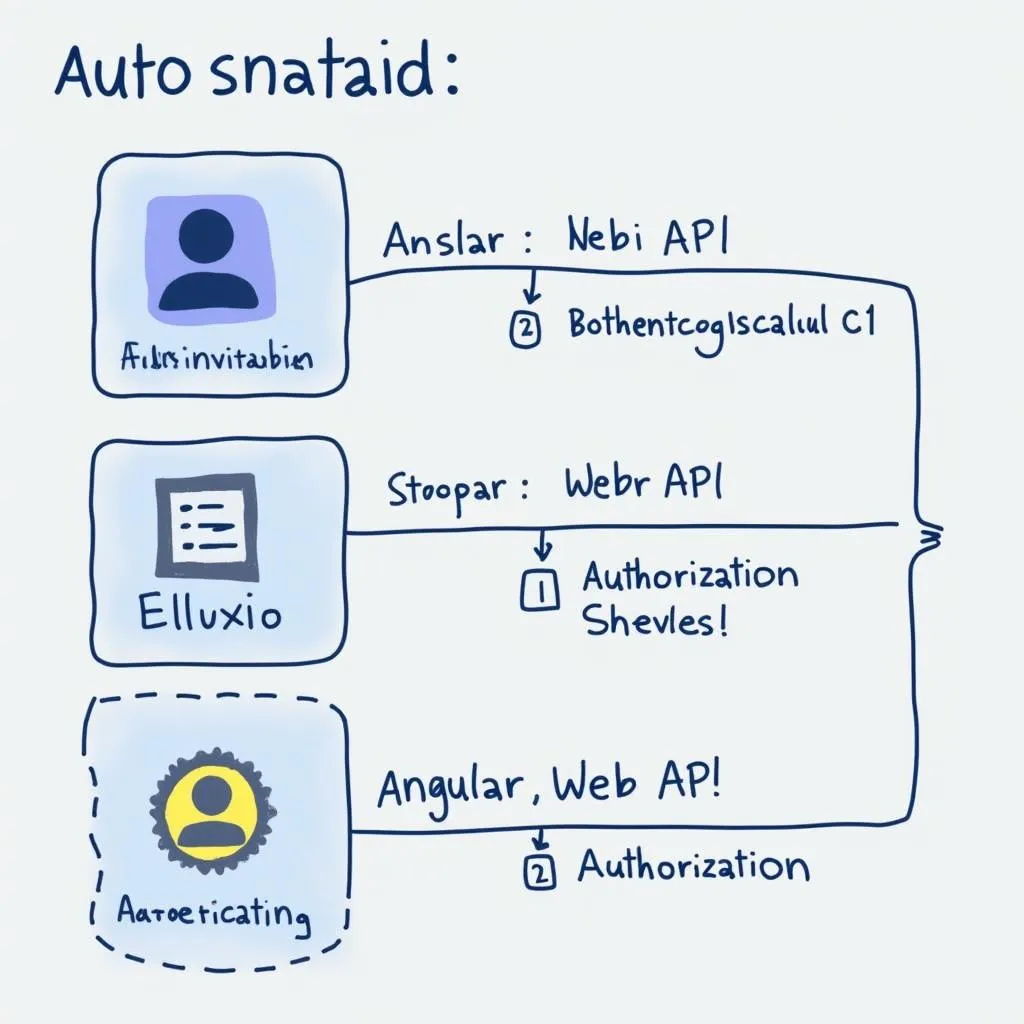Angular SPA (Single Page Application) and Web API have become a popular choice for building modern, dynamic, and scalable web applications. This approach offers a clear separation of concerns, improved performance, and an enhanced user experience. In this article, we’ll delve into the world of Angular SPA and Web API, exploring their benefits, how they work together, and how you can leverage them to build cutting-edge web applications.
Understanding Angular SPA
Angular, developed and maintained by Google, is a powerful front-end framework for building dynamic web applications. Angular SPAs, unlike traditional multi-page applications, load a single HTML page and dynamically update content as the user interacts with the application. This results in faster loading times, smoother transitions, and a more fluid user experience.
The Role of Web API
A Web API (Application Programming Interface) serves as the backbone of an Angular SPA, providing it with the data and functionality it needs to operate. It acts as an intermediary between the front-end application and the back-end server, exposing data and business logic through a set of well-defined endpoints.
How Angular SPA and Web API Work Together
The interaction between an Angular SPA and Web API follows a client-server architecture:
- User Interaction: The user interacts with the Angular SPA.
- API Request: The Angular application sends an HTTP request to the Web API endpoint, requesting specific data or actions.
- Server Processing: The Web API processes the request, interacts with the database or other services, and prepares a response.
- Data Return: The Web API sends a response back to the Angular application, typically in JSON or XML format.
- Dynamic Update: The Angular application receives the data and dynamically updates the user interface without requiring a full page reload.
This decoupled architecture allows for independent development and scaling of the front-end and back-end, making it easier to maintain and update the application.
Advantages of Using Angular SPA with Web API
Combining Angular Spa With Web Api offers numerous advantages:
- Improved Performance: SPAs reduce the amount of data transferred between the client and server, resulting in faster loading times and a smoother user experience.
- Enhanced User Experience: The dynamic nature of SPAs provides users with a more responsive and interactive experience, similar to that of desktop applications.
- Clear Separation of Concerns: Separating the front-end (Angular) from the back-end (Web API) simplifies development, maintenance, and testing.
- Reusability: The Web API can be reused by multiple clients, such as web applications, mobile apps, or third-party services.
- Scalability: Both Angular and Web APIs are designed to be scalable, allowing you to handle increased traffic and data demands.
Building Your First Angular SPA with Web API
Getting started with Angular SPA and Web API might seem daunting, but numerous resources and frameworks can streamline the process. Here’s a simplified guide to get you started:
- Set up your development environment: Install Node.js, Angular CLI, and your preferred IDE or text editor.
- Create a new Angular project: Use the Angular CLI to generate a new project structure with the necessary files and configurations.
- Build your Web API: You can choose from various technologies for building your Web API, such as ASP.NET Core, Node.js with Express, or Python with Flask.
- Define API Endpoints: Design your API endpoints to expose the data and functionality needed by your Angular application.
- Make HTTP Requests from Angular: Utilize Angular’s HttpClient module to make HTTP requests to your Web API endpoints.
- Display Data in Angular Components: Process the received data and dynamically display it in your Angular components using data binding and other Angular features.
 Angular SPA and Web API Architecture
Angular SPA and Web API Architecture
Best Practices for Angular SPA and Web API Development
To ensure the success of your Angular SPA and Web API project, consider the following best practices:
- Use a Typed Language: Leverage TypeScript in your Angular project to enhance code maintainability and reduce errors.
- Implement Authentication and Authorization: Secure your Web API using appropriate authentication and authorization mechanisms to protect sensitive data.
- Handle Errors Gracefully: Implement robust error handling in both your Angular application and Web API to provide informative feedback to users and facilitate debugging.
- Optimize for Performance: Minimize API calls, implement caching strategies, and optimize your code for optimal performance.
- Write Clean and Maintainable Code: Follow coding conventions, use meaningful variable names, and write modular code to enhance readability and maintainability.
 Securing Angular SPA and Web API
Securing Angular SPA and Web API
Conclusion
The combination of Angular SPA and Web API offers a powerful and efficient way to build modern, dynamic, and scalable web applications. By understanding the core concepts, advantages, and best practices, you can leverage these technologies to create exceptional user experiences and streamline your development process. As you embark on your journey with Angular SPA and Web API, remember that continuous learning and exploration are key to mastering these ever-evolving technologies.
FAQs about Angular SPA and Web API
Q1: What are the advantages of using an Angular SPA over a traditional multi-page application?
A: Angular SPAs offer improved performance, enhanced user experience, and a clear separation of concerns, resulting in faster loading times, smoother transitions, and a more responsive and interactive user interface.
Q2: What are some popular technologies for building Web APIs?
A: Popular choices include ASP.NET Core, Node.js with Express, Python with Flask, Java with Spring Boot, and Ruby on Rails.
Q3: How do I handle authentication in an Angular SPA with a Web API?
A: Common approaches include using JSON Web Tokens (JWT) or OAuth 2.0 to secure your API endpoints and authenticate users.
Q4: What are some tips for optimizing the performance of my Angular SPA and Web API application?
A: Minimize API calls, implement caching strategies, optimize images and assets, and use a content delivery network (CDN) to improve loading times.
Q5: Are there any resources for learning more about Angular SPA and Web API development?
A: Yes, numerous online resources, tutorials, and courses are available, including the official Angular documentation, Microsoft’s ASP.NET Core documentation, and various online learning platforms.
Need Help Building Your Next Web Application?
Contact us today for a free consultation!
Phone: 0373298888
Email: [email protected]
Address: 86 Cầu Giấy, Hà Nội
Our team of experienced developers is here to assist you with all your Angular SPA and Web API development needs.